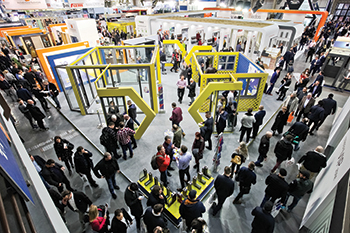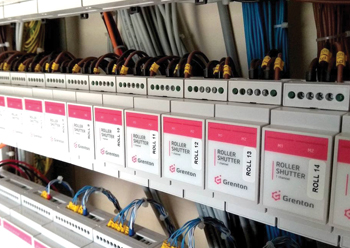
 Polish craftsmanship and products are among the best in Europe.
Polish craftsmanship and products are among the best in Europe.
The GCC region is yet to fully discover the quality of Polish products and services, which is comparable with the best in Europe but offered at competitive prices, according to the country’s manufacturers in the construction and allied sectors.
To create greater awareness in the region of Polish offerings and promote investment in Poland, the country’s trade organisations have been actively participating at regional exhibitions and assisting investors enter the Polish market.
One such organisation is the Polish Investment and Trade Agency (PAIH), also responsible for the promotion of Poland at the upcoming Expo 2020 Dubai, a six-month-long world-class event that opens its doors on October 20, next year.
The PAIH, in coordination with the Poznan International Fair, recently hosted members of the foreign media associated with the construction industry to create awareness about the Polish construction industry for a study visit early this year.
Gulf Construction’s ABDULZIZ KHATTAK was part of the visit, which included a tour of the largest construction industry trade fair in Poland and Central and Eastern Europe (CEE), the Budma construction and architecture fair – co-located with WinDoor-tech Fair – at the MTP Poznan Expo in the city of Poznan, in addition to visits to a select few manufacturers which are keen to either enter the GCC or increase their penetration of the regional market.
Counted among the CEE countries – which include the former socialist states – Poland is one of the fastest growing economies in the EU, according to the European Commission (EC) data for 2017. Growth that year reached 6.4 per cent, and is forecast at 5.8 per cent for 2019.
With a population of 38 million, it’s the sixth largest in the EU and the largest in the CEE group. The country recorded €206.6 billion ($231.525 billion) in exports in 2017, an 11.8 per cent increase over 2016; and €206.1 billion in imports (13.4 per cent increase over 2016). A valuable asset for Poland is its huge domestic market – a key factor taken into account by foreign investors. In 2016, the ratio of exports to GDP was 52.1 per cent, compared to the much higher figures of neighbouring countries. This means Poland is less affected by changing external environments.
Construction sector
The Polish construction industry regained growth momentum in 2018, with output expanding by 17 per cent in real terms, up from 6.5 per cent in 2017. Output value in real terms is expected to increase from $118.6 billion in 2018 to $148.6 billion in 2023, according to GlobalData’s report, ‘Construction in Poland - Key Trends and Opportunities to 2023’.
Manufacturing is an important sector of the Polish economy. In 2018, this sector generated revenues worth €50 billion. Construction materials produced by Poland include chemicals, ceramic tiles, and wood and plastic products.
The country has a sizeable construction chemicals market, with more than 120 producers in the sector. In 2017, it was worth €1.8 billion. The construction chemicals market in Poland consists of paints and varnishes, construction adhesives, mortars and thick plasters, coats and thin plasters, flooring, and building sealants.
In the ceramic tiles sector, Poland is EU’s third largest producer after Italy and Spain, having an annual production worth €550 million. Almost 50 per cent of Polish tiles produced are exported, mainly inside the EU, says Moneer Faour, Dubai Bureau chief for the PAIH.
Joinery sector
He says the leading segment of the Polish construction and building industry is joinery.
Poland is a global leader when it comes to final fix joinery, which includes production of doors and windows – wooden, plastic, aluminium and steel – and gates, barriers, thresholds and frames. It has more than 2,000 window manufacturers. In 2017, the sector produced 23.4 million pieces of doors and windows, says a spokesman for PAIH. The Polish window and door joinery sector uses state-of-the-art technologies, qualified personnel and innovative solutions. It is also one of the most competitive in the EU region. Its products have been used in numerous projects in 120 countries across the world.
In 2017, Poland was the top exporter of window and door joinery products within the EU – ahead of Germany – with exports worth a total of €1.748 billion. This totalled 22.3 per cent of total exports in the segment in the EU.
Meanwhile, outside Europe too, Poland’s windows and door manufacturers have seen an increase in exports. In 2017, products worth €155.5 million were exported to markets outside the EU – an increase of over 21 per cent over the previous year.
GCC market
As for the GCC market, Faour says the potential for Polish producers can be observed primarily in the areas of specialised building techniques for infrastructure, modern technologies that take into account global trends of sustainable development and energy-saving, finishing products of buildings, furniture and other decorative products.
He says most Polish companies rely on trading through local representatives and distributors, and these include Smay (for fire ventilation systems), Kan-Therm (water fittings), Polon-Alfa (fire alarm systems), TM Technologie (emergency and safety signages), VOX (interior decorations), Apator (gas and electricity smart meters), and several brands in the lighting segment, such as ES-System, and door, furniture and ceramic tile manufacturers.
Some Polish companies, however, have established a presence in the UAE in order to access the GCC market, he adds.
These include VTS Clima (for HVAC systems), Techmatik (concrete manufacturing machines), RME (welding devices), as well as Stylis Dubai owned by Nowy Styl Group (finishing hotels and offices), to name a few.
Among major projects, a housing community in Abu Dhabi was built according to the Izodom 2000 technology, which employs passive solutions that significantly reduce heating costs, says Faour.
“In several cases, multinational companies outsource their products to be made in Poland. Others have even set up their own factories there,” he says.
Faour notes oil prices are still a major influence on the dynamics and construction trends across the GCC. They play a significant role in budgets and timely remuneration of contractors.
For the UAE in particular, he adds, a critical factor is the interest among foreign investors to invest in its real estate, and this sector is influenced by international economic factors and the political situation in the region.
Challenges
Commenting on the challenges for Polish companies in the GCC, Faour says: “Polish exporters who are considering entering the UAE face challenges related to logistics, extended payment terms, and high international and local competition.
Another challenge is during tendering, he adds. “The tenders announced by government entities are usually directed at local companies, while the amount for security bid is mandatory as per the project’s scale,” he adds.
But Faour says the way forward is a long-term strategy of activities: “Adapting to the climatic conditions and building the brand’s recognition are keys to successful expansion.”





















_0001.jpg)


.jpg)
















.jpg)








.jpg)




